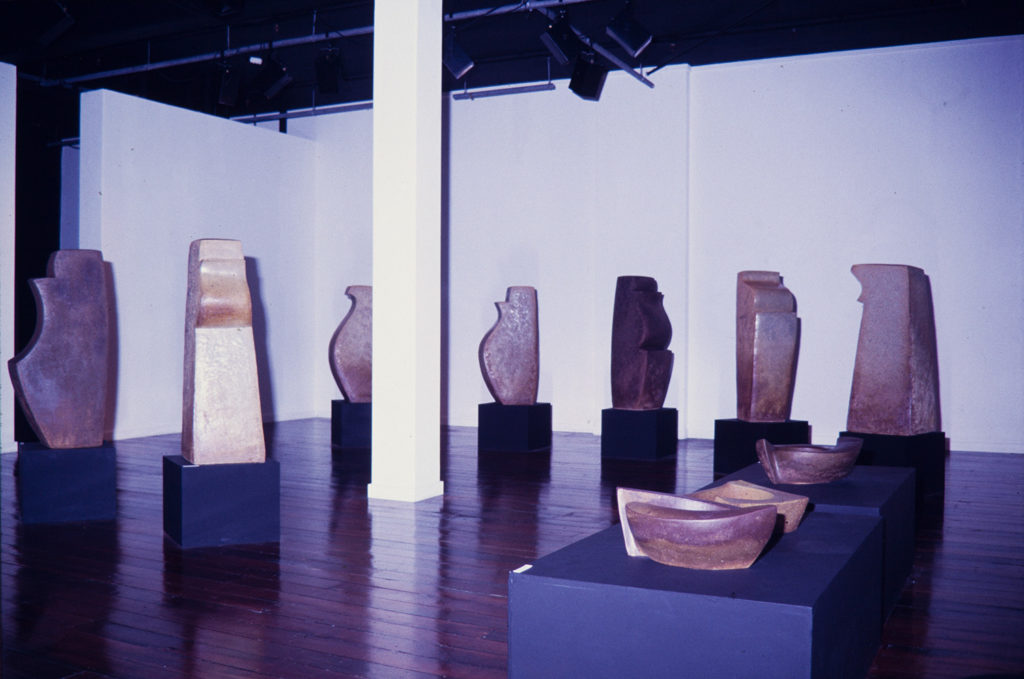This is potter James Greig's first show in New Zealand since his 1982 survey show Transformations, also at Wellington City Art Gallery. He says the survey show was the starting point for the new work shown here. The pots in his 1982 survey show evolved from archetypal forms found in nature—like seed pods. Greig calls the large freestanding ceramics in the new show his Transformation series. These stoneware sculptures ‘turn outwards’—the 'negative space' surrounding the works being key to their impact.
Born in Stratford, Taranaki, in 1936, Greig studied architecture at the University of Auckland. His major influence was Frank Lloyd Wright and his early building designs often featured circular or spiral forms. At twenty-five, he saw a Len Castle white-glazed vase in a Devonport shop window and felt 'an immediate inner rapture’. Grieg became Castle’s student. In 1964, he was appointed resident potter at the Art and Design Centre at Massey University in the Manawatu, and, in 1968, he settled with his wife and family in the Wairarapa.
In 1982, he was awarded a year-long fellowship from the Japanese Foundation to study the work of Japanese potter Kawai Kanjirō. During this time, he became the first Western artist to exhibit at Kyoto’s Akasaka Green Gallery and was included the country’s most prestigious ceramics show Tachibana-Ten: One Hundred Best Potters, which travelled to Tokyo, Kyoto, and Osaka. 'He has a deep understanding of Japanese ceramics, but his own works go far beyond just a mixture of Japanese style with his own vision’, wrote Mitsuhko Hasebe, Chief Curator of Craft, at the National Museum of Modern Art, Tokyo. Greig is a cultural ambassador to Japan and his work is in collections worldwide from the Victoria and Albert Museum, London, to the Imperial Palace Household Collection in Tokyo.
However, in 1986, on the morning of his solo exhibition at the Tachikichi Gallery in Kyoto, Greig—aged 50 years—died of a heart attack. Japanese colleague, Kimitoshi Sato, wrote a tribute to Greig's in New Zealand Crafts. 'And the final sad story. Who on earth could die of a sudden heart failure with no one else around, at a Japanese inn at dawn on the opening day of his first exhibition in Kyoto, which was to be so important? Who on earth could win such an unselfish destiny?’
A memorial exhibition James Greig: Beyond East and West was held at Tokyo’s Ginza Gallery in 1987, and, in 1994, the Manawatū Art Gallery (now Te Manawa) staged a solo show of his work, Spark of Life, alongside The Crane and Kotuku: Artistic Bridges between Japan and New Zealand.
The free-standing Transformation works in this show are among his final works. Six of them are now in the collection of the Dowse Art Museum, Lower Hutt. In 2016, the Dowse held the survey James Greig: Defying Gravity.









